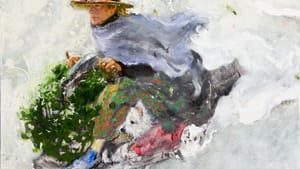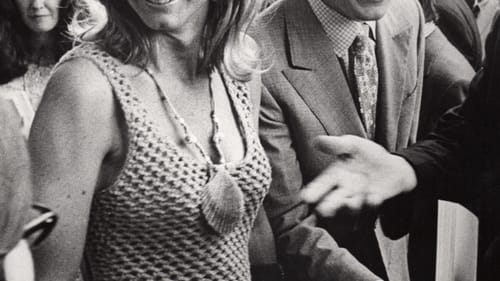Stay in the Loop
BSR publishes on a weekly schedule, with an email newsletter every Wednesday and Thursday morning. There’s no paywall, and subscribing is always free.
Immortality in art
The Brandywine River Museum presents ‘Phyllis Mills Wyeth: A Celebration’

Tributes can be tricky. They can seem gratuitous, obligatory, forced, or even fawning. But the Brandywine River Museum has mounted a truly touching and affectionate visual celebration of Phyllis Mills Wyeth, seen through the eyes of her husband Jamie.
Born in 1940 in New York, Phyllis Mills was a passionate horsewoman raised among the thoroughbreds of the Virginia hunt country. She married the Brandywine Valley painter in 1968 after a nascent career in politics working for John F. Kennedy. At age 20, an injury in an auto accident left her with a disability, but it did not stop her passionate pursuits.
Phyllis transferred her equine skills to carriage driving, where she became a champion. She also championed the rights of people with disabilities, working with children at a Wilmington psychiatric center as well as on a larger scale—for the National Endowment for the Arts and on White House commissions. Her death in January 2019 prompted the museum’s tribute.
Painting close to home
It’s not unexpected that a masterful painter like Jamie Wyeth would continue the longstanding artistic (and family) tradition of painting what is near at hand. The exhibition’s works—all painted by Jamie and chosen by him and curator Audrey Lewis—provide an intimate look at a life shaped both by the Brandywine Valley and by a family that insists (and even thrives) on the close view.
In a small gallery on the museum’s second floor are 28 portraits of Phyllis Mills Wyeth that span the couple’s courtship and marriage. The earliest, Portrait of Phyllis Mills (1967) portrays its subject surrounded by light and forest greenery, nature personified. A number of paintings show their subject’s steely determination, seen clearly in the first fully finished portrait on view, And Then into the Deep Gorge (1975). This oil on canvas is diametrically opposite in style to the 1967 work. It’s a genre painting with Phyllis driving her carriage through darkened woods.
Many styles
In fact, wide stylistic variance is one hallmark of this exhibition. Spring, the Hanging of the Tree Rocks (2017) is fantastical, almost hallucinatory, with faces peering through swirling color and a painted frame that carries the frenzy almost onto the wall. But Stealing Holly from the Irénées (2015), filled with motion and narrative, could almost be a period book illustration.

Southern Light (1994) is a straightforwardly elegant and insightful portrait, while one of the exhibition’s last works, Overslept (2018), is an Impressionist depiction of Phyllis surrounded and swaddled by luminous drapery.
Some works are familiar, if only in subject matter. There is a series of charming dog miniatures that Jamie painted as annual Christmas presents, referential of an earlier museum exhibition of his “dog portraits.” And Connemara (1987) shows Phyllis seated in her carriage behind her horses, a stalwart figure heading off into the dark reminiscent of the signature image of the museum’s recent Frolic Weymouth exhibition.
Gone, but always here
Naturally, all the works have deep Brandywine Valley or Maine connections, but one is especially eloquent. The exhibition’s most striking and prescient work is the deceptively simple Wolfbane (1984). Phyllis’s hat and a small bouquet hang from a straight-backed chair. In reproduction it seems straightforward, but when seen in person, the mixed-media work is filled with depth and resonance. Stunning in its ability to evoke presence through absence, it aptly and poetically sums up this tribute: gone, but always here through art.
The paintings will travel to the Farnsworth Art Museum (Rockland, Maine) and then on to the Greenville County Museum of Art (South Carolina). For this viewing, Jamie updated works—some still had wet paint when the museum received them—and there is a small catalogue that includes additional images not on the walls.
This may be a small exhibition, but it speaks universally. We may not all be observed, painted, eulogized, and immortalized by a major American artist, but in this intimate room there is a portrait of us all—loving, striving, overcoming, and remembered.
What, When, Where
Phyllis Mills Wyeth: A Celebration. Through May 5, 2019, at the Brandywine River Museum, 1 Hoffman’s Mill Road, Chadds Ford, PA. (610) 388-2700 or brandywine.org.
Sign up for our newsletter
All of the week's new articles, all in one place. Sign up for the free weekly BSR newsletters, and don't miss a conversation.

 Gail Obenreder
Gail Obenreder